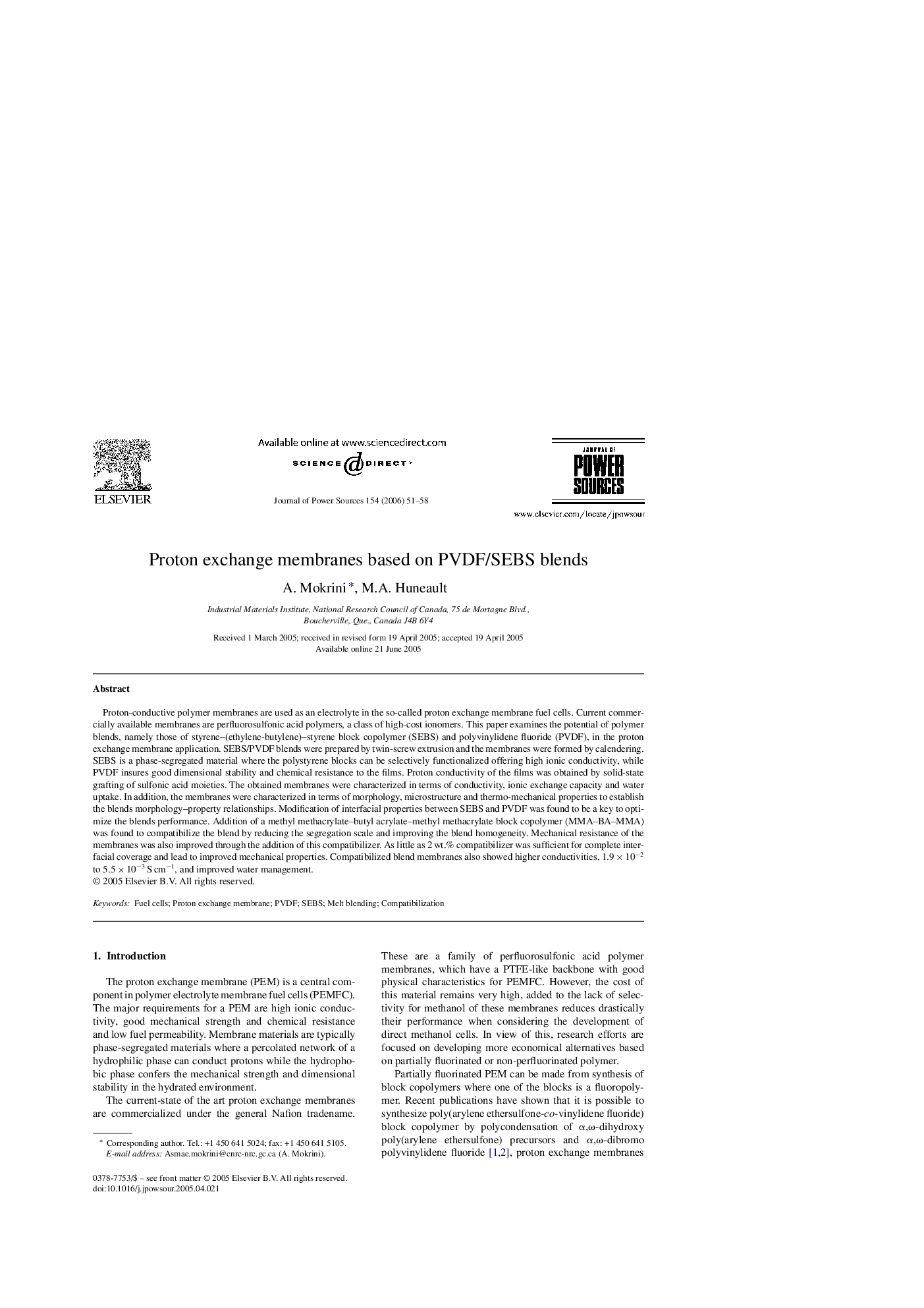| کد مقاله | کد نشریه | سال انتشار | مقاله انگلیسی | نسخه تمام متن |
|---|---|---|---|---|
| 1295102 | 973658 | 2006 | 8 صفحه PDF | دانلود رایگان |

Proton-conductive polymer membranes are used as an electrolyte in the so-called proton exchange membrane fuel cells. Current commercially available membranes are perfluorosulfonic acid polymers, a class of high-cost ionomers. This paper examines the potential of polymer blends, namely those of styrene–(ethylene-butylene)–styrene block copolymer (SEBS) and polyvinylidene fluoride (PVDF), in the proton exchange membrane application. SEBS/PVDF blends were prepared by twin-screw extrusion and the membranes were formed by calendering. SEBS is a phase-segregated material where the polystyrene blocks can be selectively functionalized offering high ionic conductivity, while PVDF insures good dimensional stability and chemical resistance to the films. Proton conductivity of the films was obtained by solid-state grafting of sulfonic acid moieties. The obtained membranes were characterized in terms of conductivity, ionic exchange capacity and water uptake. In addition, the membranes were characterized in terms of morphology, microstructure and thermo-mechanical properties to establish the blends morphology–property relationships. Modification of interfacial properties between SEBS and PVDF was found to be a key to optimize the blends performance. Addition of a methyl methacrylate–butyl acrylate–methyl methacrylate block copolymer (MMA–BA–MMA) was found to compatibilize the blend by reducing the segregation scale and improving the blend homogeneity. Mechanical resistance of the membranes was also improved through the addition of this compatibilizer. As little as 2 wt.% compatibilizer was sufficient for complete interfacial coverage and lead to improved mechanical properties. Compatibilized blend membranes also showed higher conductivities, 1.9 × 10−2 to 5.5 × 10−3 S cm−1, and improved water management.
Journal: Journal of Power Sources - Volume 154, Issue 1, 9 March 2006, Pages 51–58